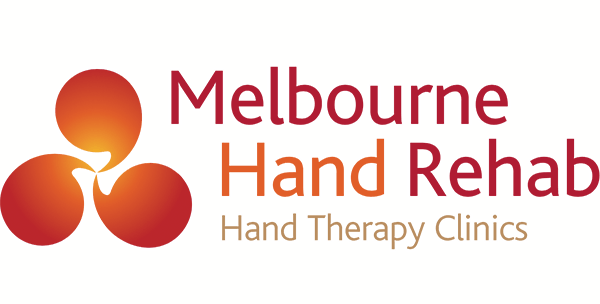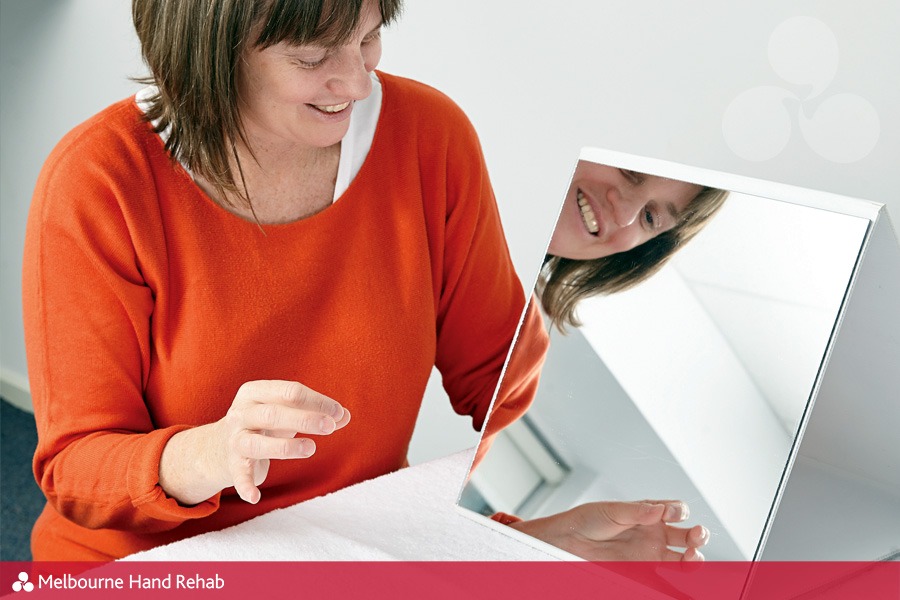
26 Apr Sensory retraining after a hand injury
Sensory retraining is a crucial aspect of hand therapy following a hand injury. It helps to re-educate the brain and restore normal sensation to the affected area, which can alleviate numbness, tingling, and phantom pain.
Typically, the type of hand injuries or conditions requiring sensory retraining or de-sensitising include:
- Injuries requiring surgery for tendon and nerve repairs, or soft tissue injuries ranging from complex crush injuries to fingertip amputations
- Burns
- Complex Regional Pain Syndrome
- Stroke
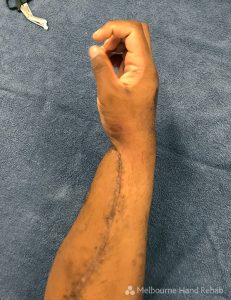
Crush/roller injury requiring multiple surgeries including tendon transfers, tendon grafting, infection debridement and skin grafts.
Assessment:
The first step in sensory retraining is to identify any areas of decreased sensation in the affected hand through a physical examination and testing of the hand’s ability to feel light touch, temperature changes, and vibration.
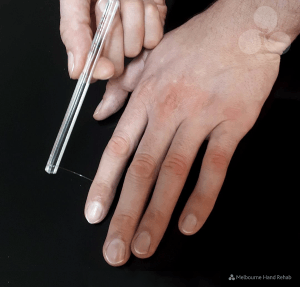
Standardised Semmes Weinstein Monofilament Test – a hand therapy tool for assessing sensation at the hands and feet.
Tailored Program:
Your hand therapist will then work with the patient to develop a tailored sensory retraining program that may include exercises, activities and stimulation to encourage the affected nerves and improve sensation.
Your program should be carried out 4 to 5 times a day for about 10 minutes each time. Depending on the stage of your injury recovery, the program may include:
Early Phase
- Massage
- Touch and localisation
Late Phase
- Mirror therapy
- ‘Brain ‘retraining’ using phone app
- Texture and shape discrimination
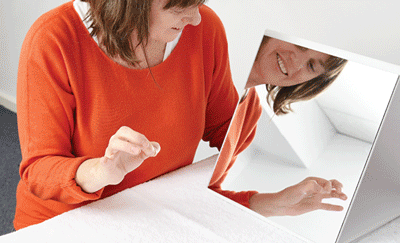
Prolonged process:
It’s important to note that sensory retraining is an ongoing process, it may take several weeks or even months of consistent work to achieve significant improvements.
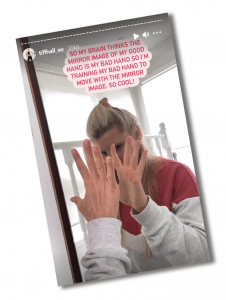
Adaptive equipment:
In addition to sensory retraining exercises, patients may also be instructed to use adaptive equipment to make daily tasks easier and to keep the affected hand active.
Sensory retraining is an important aspect of hand therapy following a hand injury. It helps to re-educate the brain and restore normal sensation to the affected area. A tailored program designed by your hand therapist, including exercises, activities, and stimulation can improve sensation. The process is prolonged and consistent work is required. Adaptive equipment can also be recommended to make daily tasks easier and to keep the affected hand active.
If you are experiencing finger, hand or wrist pain, don’t hesitate to get in touch. We’d love to help you.
BOOK AN APPOINTMENT
For more information, call us directly on 03 9458 5166
You might also be interest in:
